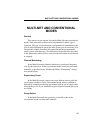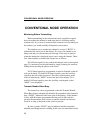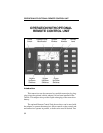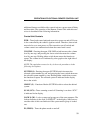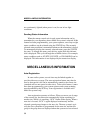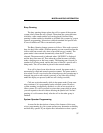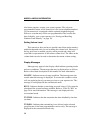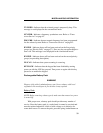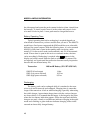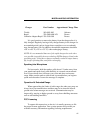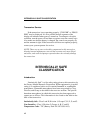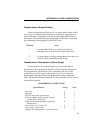
INTRINSICALLY SAFE CLASSIFICATION
43
Classification of Areas (Division)
Areas are classified as Division 1or 2 as shown below. Since a Divi-
sion 1 area is considered most hazardous, a transceiver approved for a
specific Division 1 atmosphere can also be used in the same Division 2
atmosphere. The intrinsically safe rating applies to Division 1 areas and
the nonincendive rating applies to Division 2 areas.
Division Area
1 An area where there is or could be an explosive
atmosphere most of the time in normal operations.
2 An area where an explosive atmosphere exists only as a
result of a fault (something going wrong).
Classification of Atmospheres (Class/ Group)
For the purposes of testing and approval, various atmospheric
mixtures have been grouped on the basis of their hazardous characteris-
tics. Equipment is approved for a class of material and also for the
specific group of gas, vapor, or dust in that class. Class I materials
include gases and vapors, and Class II materials include combustible
dusts. The typical hazardous materials in each group and class are shown
in the following table.
ATMOSPHERE CLASSIFICATION
Typical Hazard Group Class
Acetylene A 1
Hydrogen B 1
Ethylene, ethyl ether, cyclopropane C 1
Gasoline, naphtha, butane, propane, alcohol D 1
acetone, benzol, natural gas
Metal dust including aluminum, magnesium, E 2
and their alloys
Carbon black, coal or coke dust F 2
Flour, starch, or grain dusts G 2
Ignitable fibers/flyings such as rayon and cotton – 3



